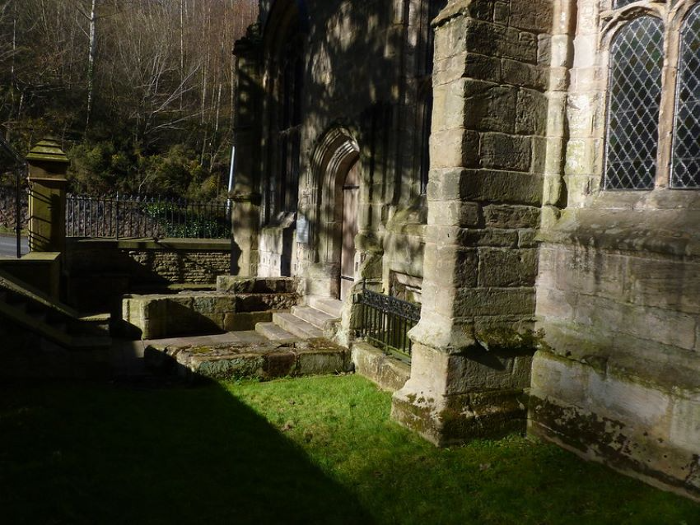St Winefride’s Well: Wales' Sacred Healing Waters

Na'ím Paymán
Nov 4, 2024St Winefride’s Well, located in Holywell, North Wales, and not far from the charming village of Northop Hall, is one of Britain’s most sacred and enduring pilgrimage sites. For its healing powers and pilgrimage value, it is sometimes referred to as the “Lourdes of Wales." This ancient site, surrounded by stunning Gothic architecture and natural beauty, continues to be a place of spiritual reflection. It offers an unforgettable experience for those seeking history, faith, or healing in its holy waters. Here, we look at this big wonder at the heart of Wales in detail.
The Legend of St Winefride
The story behind St Winefride’s Well is one of faith, martyrdom, and miracles. St Winefride, the patron saint of the well, was killed in the 7th century by her suitor. According to legends, the suitor was angry at her refusal and her decision to become a nun. So, he decapitated her, and a well sprung right at the place where her head had fallen.
St Winefride’s father hears of what happened and manages to place a curse on the suitor, thereby killing him. Then he prays for his daughter’s revival, and as a result, Winefride comes to life.
The legend of St Winefride was at first an unknown story, but as time went by, it gained more fame, and later it became associated with Hollywell. By the 12th century, there were a number of pilgrims visiting the town and its well, and in the 15th century, it was Henry IV, the king himself, who visited the well and even built a chapel around it. That chapel did not survive and was later replaced by another one, built by the mother of King Henry VII.

A Shrine of Pilgrimage and History
St Winefride’s Well has been a place of pilgrimage since its creation and has attracted believers from every corner of the world. For over 1,300 years, the waters of this well have been believed to possess miraculous healing powers. There are various accounts of miraculous healings attributed to the well.
Religious people continued visiting the site even after the English Reformation. Protestant authorities could not stop Catholic pilgrims from visiting the well. After the 18th century, secular tourists also visited the well continually. They believed its healing powers were due to its mineral content.
The well itself is housed in a beautifully preserved late mediaeval shrine, and pilgrims still visit the site to pray, light candles, and, in some cases, bathe in the sacred waters.

A Gothic Masterpiece
One of the most striking features of St Winefride’s Well is the architectural beauty of its surrounding chapel. The chapel was built in the 16th century and is now a Grade I listed building. It comprises an upper chapel, which was used as a school and a place of worship, and a crypt that encloses the spring.
The building, designed in the Perpendicular style, features coursed sandstone walls. It also has a low-pitched roof with a crenellated parapet and intricate window tracery in the upper chapel. Inside, the roof and arches are adorned with carvings of animals, grotesques, and family emblems, with traces of a former rood screen in the chancel.

A Living Tradition of Faith
Despite its long history, the traditions of pilgrimage and devotion at St Winefride’s Well are very much alive today. For many visitors, the well offers a profound spiritual experience. They visit it for its healing waters as well as its serene and calm atmosphere. Annual religious processions and special events keep the site’s spiritual significance vibrant and enduring.
Beyond the spiritual significance of the well, the site is a haven of natural beauty. The clear spring water flows gently, its tranquil sound adding to the serene atmosphere. The surrounding gardens and greenery make St Winefride’s Well feel like a sanctuary, a place where nature and faith intertwine harmoniously.
Discovering Holywell
St Winefride’s Well is located in the quaint town of Holywell, which takes its name from the sacred site. After visiting the well, take time to explore the town’s rich heritage. A notable landmark in Holywell is Greenfield Mills. It is the remains of a large copper factory, and its surrounding woods and trails are great for walking and exploration.
Pen Y Maes Woods, in which the mills are located, is also a great place for wildlife lovers, with a variety of animals roaming in it. It is also a wonderful spot for dog-walking. Other attractions near the market town are Greenfield Valley Heritage Park, Pen y Ball Monument, and Garreg Ateb.
Planning a Visit
St Winefride’s Well is situated in Holywell, Flintshire, North Wales, easily accessible by car or public transport. It is located around 16 kilometres from Loggerheads Country Park and only 9 kilometres from Flint Castle.
For those coming by train, there is a railway station at Flint, which is about 4 kilometres from Hollywell. There is also limited car parking available on site, as well as a place for bikes. The place also boasts great disabled access.
The well is open daily to visitors, with seasonal variations in opening times. During spring and summer, it is open from 9 am to 5 pm, while in autumn and winter, the time changes from 10 am to 4 pm.
While admission to the chapel is free for everyone, checking out the holy well comes with a fee. There is a gift shop and an exhibition on site worthy of looking at after visiting the well.
St Winefride’s Well is far more than a historical landmark. Its rich architectural heritage leaves visitors with a deep sense of connection to the past, and its holy well offers a unique and profoundly meaningful experience for everyone.

Na'ím Paymán
DirectorNa'ím set up Paymán Club in 2015 to provide comfortable accommodation for tourists and business travellers across the UK and further afield.
Categories
blog
